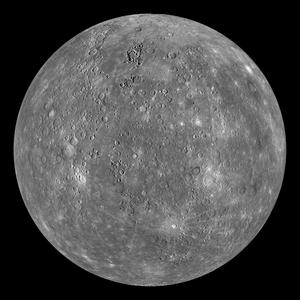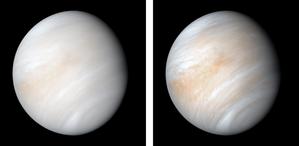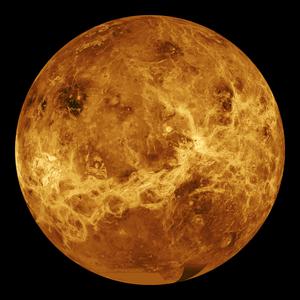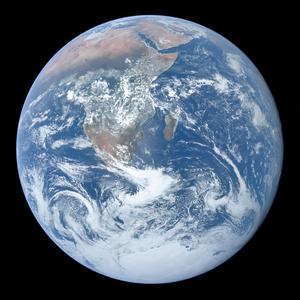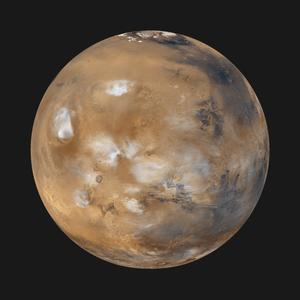Loading...
Related Media
Mercury
Caption: This image is a composite of a picture mosaic of the planet Mercury's surface obtained by the MESSENGER (Mercury Surface, Space Environment, Geochemistry and Ranging) space probe. MESSENGER was launched by NASA in 2004 and explored Mercury from 2011 to 2015.
Credit: NASA/Johns Hopkins University Applied Physics Laboratory/Carnegie Institution of Washington credit link
Credit: NASA/Johns Hopkins University Applied Physics Laboratory/Carnegie Institution of Washington credit link
License: PD Public Domain icons
Venus in visible light
Caption: This picture taken by NASA's Mariner 10 probe shows what the planet Venus looks like when looking at it with naked eyes. Venus is enshrouded inside a thick cloudy atmosphere dominated by carbon dioxide, never revealing its hot surface.
Credit: NASA/JPL-Caltech credit link
Credit: NASA/JPL-Caltech credit link
License: PD Public Domain icons
Venus' surface
Caption: This image is a computer-aided rendering of the surface of the planet Venus. Since visual light cannot penetrate the thick clouds in Venus' atmosphere, the image was obtained with radio waves. NASA's space probe Megallan, launched in 1989 mapped Venus' surface between 1990 and 1994.
Credit: NASA/JPL credit link
Credit: NASA/JPL credit link
License: PD Public Domain icons
Earth as observed from Apollo 17
Caption: Full disk view of the Earth taken on 7 December 1972, by the crew of the Apollo 17 spacecraft en route to the Moon at a distance of about 29,000 kilometres (18,000 mi). It shows Africa, Antarctica, and the Arabian Peninsula.
Credit: NASA/Apollo 17 crew/Project Apollo Archive
Credit: NASA/Apollo 17 crew/Project Apollo Archive
License: PD Public Domain icons
Mars
Caption: This image of the planet Mars taken by NASA's Mars Global Surveyor Orbiter in 1999 shows its dry surface. The picture features the most spectacular geological regions on Mars. Besides the deep Valles Marineris valley we see four volcanoes. While three of them form the Tharsis ridge, the Olympus Mons is largest volcano we have so far discovered in the Solar System. Ice clouds cover parts of the Martian surface.
Credit: NASA/JPL/MSSS credit link
Credit: NASA/JPL/MSSS credit link
License: PD Public Domain icons
